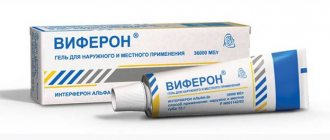general information
Condylomas are a benign tumor formation that is “located” on the epidermis or mucous tissues and looks like warts and papillae. Single specimens (about 7 mm) or entire “colonial formations” (up to several tens of mm) of condylomas settle on the body of women and men and often resemble cauliflower in appearance. The color of these substances ranges from flesh-colored to brown. Condylomas are viral in nature, so such problems can even occur in children (during childbirth from an infected mother). As long as the growth has not reached the epidermis, the person does not pose a threat to others; the risk of infection increases if the growths are located in the epidermal layer. Condylomas are usually divided into two types:
- wide;
- pointed.
In the first case, condylomas in women and men look like a mushroom with a cap and a wide stalk and are most often a consequence of secondary stage syphilis. Condylomas of the genital type are transmitted through sexual relations; the human papillomavirus (HPV), which is activated under certain conditions, is involved in their appearance. The main location of genital warts is the genitals and oral cavity. Condylomas in women settle on the outer and inner parts of the labia, in the vagina, clitoris and anus. Warts and papillary growths in men select the glans penis and frenulum of the foreskin.
Recurrence of condylomas in the mouth
In order to prevent relapse (reappearance of formations), it is necessary not only to treat condylomas in the mouth, but also to get rid of the papilloma virus.
The higher the concentration of viral DNA in the oral mucosa, the greater the risk that the disease will return again.
As a result, the condylomas will have to be removed again.
In addition, in the presence of high-oncogenic risk HPV, the risk of oncological complications increases.
There is no doubt that the virus is worth getting rid of.
In our clinic, antiviral and immunomodulatory treatment is used for this purpose.
Immunity stimulation programs are most effective.
It is the activity of the immune system that determines:
- will HPV symptoms appear after infection (most people do not have them, although up to 90% of people who are sexually active come into contact with the virus)
- how large will the condylomas be?
- in what quantity will they appear in the mouth?
- how quickly the virus is eliminated (removed from the body)
- will there be complications, including cancer?
Immunity has the most significant influence on the clinical course of human papillomavirus infection.
Therefore, stimulation of the immune system makes it possible to influence the risk of complications and relapses.
A correctly selected treatment regimen in most cases allows you to get rid of not only the clinical manifestations of human papillomavirus infection, but also the carriage of HPV.
If there are pathological changes in the epithelium in the mouth (precancerous processes), they can regress after the virus is eliminated.
In our clinic, immunocorrection is carried out by an experienced immunologist.
It is selected individually, based on analyses.
Reasons for appearance
“What causes condylomas?” - a question that worries patients with a similar problem. The route of infection with condylomas is through unprotected sexual contact. Moreover, these include traditional intimate relationships, as well as oral, anal and homosexual relationships. Children get the disease from sick women while moving through the birth canal. Do not be negligent about household methods of infection. There is no need to take risks and use other people’s personal belongings, especially bath accessories (washcloth, towel, flip flops, etc.). Condylomas are activated under the influence of certain factors:
- indiscriminate unprotected sex;
- early onset of intimate relationships;
- sexual contacts with partners with condylomas or HPV carriers;
- decreased immune abilities of the body;
- previous diseases of the genital tract;
- frequent stress, vitamin deficiency;
- sloppiness and failure to comply with personal hygiene rules.
The appearance of genital warts is often associated with HPV. Human papillomavirus infection poses a great danger for the development of cancer. Condylomas of this etiology are the object of study and treatment by doctors of different specializations: in women - by gynecologists, in men - by urologists. If the location of condylomas is in the anal area, then a proctologist leads the patients. You should definitely consult about genital warts, because the development of the disease can occur in a variety of ways - from self-healing to the degeneration of condylomas into malignant formations. The specialists of the Global Clinic Center have accumulated positive experience in solving such problems, so contacting the clinic is a prerequisite for successful treatment of the patient.
Asymptomatic carriage of human papillomavirus (HPV)
In reality, many more people are infected with HPV than statistics show. Most of them simply do not know about it, since there are no symptoms of condyloma.
The virus may not manifest itself in any way for a long time, since the human immune system does not allow it to develop to the required extent. However, at any time, with a decrease in both general and local immunity, this can happen, and then papillomas and/or condylomas appear.
1 Laboratory diagnostics
2 Dermatoscopy
3 Extended colposcopy
Symptoms
The main manifestation of growths is their unpleasant and repulsive appearance. But women will also be reminded of condylomas by other unpleasant moments. The time elapsed from the first contact-infection to the moment when condylomas become clearly visible can be completely different. Sometimes a week or a month is enough for condylomas to appear; in other situations, years may pass. The incubation period depends on the general health of the woman or man, their immunity, lifestyle, etc. Condylomas in women and men cause itching and burning in the genital area and near the anus. This occurs during the period of germination of condylomas; in the future, such symptoms may disappear. An increase in the amount of whitish discharge, sometimes mixed with blood and an unpleasant odor, provokes condylomas in women, which are localized on the vaginal mucosa or cervix. When condylomas are found in the anus, the passage of feces can injure them and cause ichor.
Clinical picture
Condylomata acuminata are formations of flesh-pink color, lobulated, ranging in size from 2 millimeters to ten centimeters, with exophytic growth, in which the apex of the genital condyloma is often wider than the base. Externally, the growths may resemble cauliflower or cockscomb.
The incubation period can range from 2-3 months to 2-3 years or more. The growth rate of formations varies, which is often associated with the state of local immunity, the presence of concomitant STIs, and sexual activity.
Pathogenesis of genital warts
HPV is found in the cellular structures of the skin and mucous membranes, so it can be transmitted from men to women, from adults to children. The long latent period of infection makes early diagnosis of the disease difficult. Condylomas are not immediately visible to the naked eye. To activate HPV, a large number of these pathogens is necessary, only then the papillomavirus “comes out”, represented by genital warts. An increase in HPV may occur due to decreased immunity in women or men. Genital condylomas are caused by the process of atypical reproduction of the human papilloma virus; under its influence, epithelial cells grow and develop with pathology. The skin and mucous tissues change and this is how condylomas appear. Growths in the form of warts and papillae can be single or massive, turning into entire “conglomerates” of condylomas.
How to distinguish papilloma from condyloma
Knowing the difference between papilloma and condyloma is necessary to determine further actions. While some can remain on the body throughout life and cause only cosmetic discomfort, others carry the risk of malignant degeneration.
| Index | Papilloma | Condyloma |
| Structure | Homogeneous | Heterogeneous, small, papillary |
| Form | Round or oval, located on a soft stem | Arbitrary, located in clusters, in the form of ridges. Characterized by a narrowing from the stem to the end |
| Size | Up to 10 mm. As a result of traumatic exposure, it may increase by 2-15 mm. | Also capable of growing |
| Color | Weak or intense pigmentation | Virtually no different in color from surrounding tissues |
| Localization | Preferably on the skin | On the mucous membranes, mainly of the urogenital area; on skin folds subject to friction from clothing |
| Peculiarities | Causes aesthetic discomfort. Rarely inflamed, usually only due to injury | It often becomes inflamed and infected. Possible ulceration of the body of the growth, pain |
| Main route of infection | Contact and household | Sexual |
| Exciter type | Typically 2, 7 and 28 strains | 6, 11, 16, 18, 39, 54, 56, 73 strains |
| Risk of malignancy | No | Yes |
Diagnostics
Human papillomavirus infection (genital warts) is diagnosed in different ways, from visual examination of women and men to the most advanced examinations. CM "Global Clinic" has in its arsenal the latest techniques for determining the nature of condylomas. Diagnostic methods used by doctors:
- Clinical examination. Some types of diseases in women and men can be masked, taking the form of genital warts, so you need to have sufficient qualifications to differentiate different problems.
- Colposcopy is recommended for women, and urethroscopy for men.
- A smear will tell a lot about condylomas in women and their nature; this cytotest will also help to exclude cervical dysplasia.
- Histology.
- Diagnostics-PCR. This examination not only detects the presence of human papillomavirus, but also determines its type.
- Immunological research. It is used to detect antibodies to HPV in the blood.
All women and men affected by genital warts must be tested for infectious diseases of the genital area (syphilis, HIV, etc.)
Complications
Condylomas themselves on the head, labia or other surfaces of the body are not as dangerous as complications after them. The infection rate is 80-90%.
The proliferation of genital warts can lead to:
- the addition of a secondary infection (suppuration, inflammation);
- fusion of the foreskin;
- malignant tumors.
Therefore, it is impossible to postpone the removal of condylomas with a laser or other method. It is necessary to eliminate not only the warts themselves, but also to comprehensively strengthen the immune defense of your body.
Treatment
Condylomas and HPV require a systematic approach to treatment.
Medication
To combat condylomas in women and men, doctors act in three directions:
- against viruses;
- in order to increase immunity;
- for fortification of the patient.
Cycloferon and inosiplex act against HPV activation and its reproduction. Inferon and allokin-alpha stop viruses and help restore the immune system. To improve the general health of women and men, Immunal, Amixin, Poludan, etc. are prescribed. A complex of vitamins and minerals is also an essential component of treatment for condylomas.
Local
Condylomas are successfully treated using ointments and sprays of antiviral action (epigen-intim, condylen, etc.). Women and men will not have to think about condylomas if they are treated with inquimod, podophyllotoxin. For pregnant women, you can use trichloroacetic and nitric acids. Women need to fight condylomas in stages: first remove them, and then, or in parallel, act to reduce the number of viruses. Often (in every third woman) condylomas enter the stage of relapse (especially if preventive measures are not followed and the recommendations of the attending physician are ignored).
Removal
Methods for removing condylomas in modern medicine are varied:
- Electric coagulation. This method has disadvantages - many contraindications, painful procedure and long recovery.
- Cryotherapy. Condylomas are removed using liquid nitrogen. The positive aspects of this technique are the absence of scars, painless effects, and the absence of anesthesia.
- Surgical method. The growths are removed during surgery, and stitches are placed at the site of the wounds. Doctors use local anesthesia.
- Use of chemicals. This method is contraindicated during pregnancy and lactation.
- Laser therapy. Condylomas are removed with a laser beam; this is a treatment that does not affect healthy cells and leaves virtually no scars.
- Radiosurgical method. The use of a special device helps remove condylomas without contact with the body. Removal of growths is accompanied by simultaneous sealing of blood vessels. This technique is one of the most modern and in demand.
Is a biopsy necessary for condylomas in the mouth?
A biopsy is performed to differentiate between benign and malignant tumors.
In addition, even if it is known for sure that the tumor is malignant, a biopsy is still done to establish its histological type.
Because different tumor structures require different therapeutic tactics.
If cancer of any location is suspected, a fine-needle biopsy is usually performed.
A section of tissue is taken for analysis using a needle or forceps, depending on the location of the tumor.
But if condylomas are present in the mouth, such a biopsy is usually not done.
Instead, an excisional biopsy is performed.
The formation is completely removed.
After this, it is sent for histological examination.
If examination of the sample shows that it is indeed condyloma, and there are no signs of malignancy, the patient is monitored.
It is carried out as long as high-oncogenic HPV remains in the body and there is a threat of oropharyngeal cancer.
If signs of malignancy are detected, the scope of the operation is expanded.
The patient is shown additional imaging tests (CT, MRI) to identify possible cancer metastases to the nearest lymph nodes and neighboring organs.
Preventing HPV infection
Condylomas must be prevented by preventive measures:
- use of contraceptives during sexual relations;
- increasing immunity;
- proper balanced nutrition;
- taking vitamins;
- compliance with hygiene standards;
- fight against bad habits;
- increasing stress resistance.
Regular visits to the doctor are a good preventative measure. The use of antiviral ointments, as well as vaccination against HPV, is prevention that will make people’s lives full.
Is it possible to treat genital warts in the mouth without surgery?
There are two areas of non-surgical treatment of condylomas:
- local therapy aimed at eliminating the formations themselves
- systemic therapy aimed at correcting immunity and destroying viruses
Local therapy for the removal of condylomas in the mouth is not used in our clinic.
This is due to the fact that the drugs used to combat these formations are toxic to the body or cause burns.
When used in the oral cavity, ingestion is inevitable.
Methods that are used to remove condylomas of other locations:
- Cytotoxic treatment.
Over the course of several weeks, drugs that block cell division are applied to the condyloma.
But they are dangerous when taken orally.
In fact, according to the mechanism of action, these are the same drugs that are used for cancer chemotherapy.
- Chemical coagulation.
Substances containing alkalis or acids are used.
They cause tissue necrosis due to chemical burns.
But using such products in the mouth is very dangerous.
Because if you swallow or inhale such substances, you can get burns to the pharynx, esophagus, and larynx.
Sometimes immunocorrection allows you to get rid of condylomas without invasive methods.
But these formations do not always disappear and not immediately.
Therefore, it is better to simply remove them and undergo immunocorrective therapy to reduce the risk of relapse and cure the viral infection.
Pregnancy and condylomas
Condylomas are an alarming signal for pregnant women. HPV in the body of the expectant mother does not have a harmful effect on the fetus, but such a lady must be under the supervision of the attending physician at all times. You can resort to removing growths only at the 28th week of pregnancy, not earlier. If the formations have settled on the genitals, then there is a high probability that the baby will acquire HPV while passing through the birth canal. If the infection is not treated, then the unpleasant moments associated with thrush increase in pregnant women. The best option is a thorough examination before pregnancy for HPV and, if it is detected, mandatory and complete treatment.
How does the virus enter the body?
The content of the article
The main route of infection is sexual. Moreover, regardless of the form of sexual contact - anal, vaginal or oral. A condom reduces the risk of infection, but it is not a panacea.
With a much lower probability, HPV can enter the body through contact and household contact - through touching, hugging, personal hygiene products, manicure tools, etc. Most often, danger awaits in public places - bathhouse, swimming pool, sauna, bus, etc.
The presence of damage and microcracks on the skin favors infection. A vertical route of infection is also possible - from mother to child. The virus can be transmitted to an infant during fetal development or when passing through the birth canal.
Removal
In almost all types of condylomatosis, there is a need to remove growths. The most widely used method is the radio wave method, which involves minimal trauma to the mucous membrane and dermatological surfaces. In addition, in many patients, condylomas are removed using a laser, cryodestruction (liquid nitrogen), and less often by simple surgery.
Under no circumstances should you try to independently eliminate condylomas on the lips, tongue, or other parts of the oral cavity; such a procedure should be carried out by a doctor in a hospital setting.










